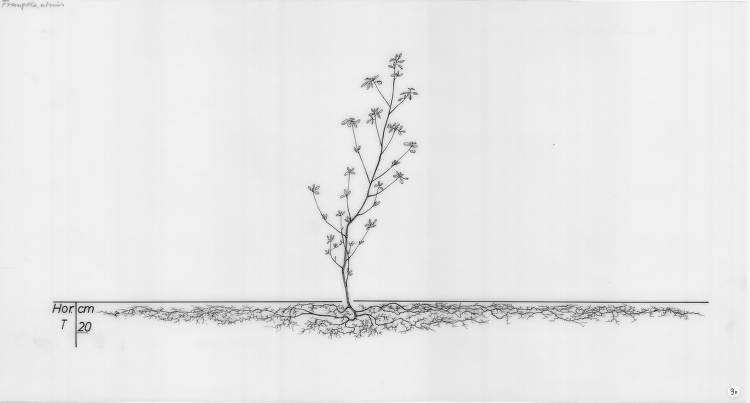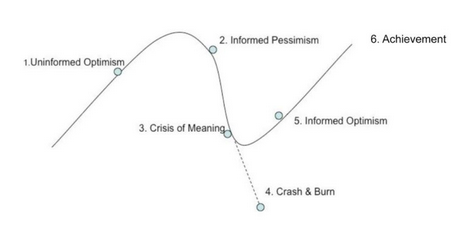Managing Time and Interest
You sit at your desk, working on your favorite side project. Suddenly, out of nowhere, an idea sparks. A quick google search reveals more possibilities. You dig a bit deeper. You discover things you dint even think of originally. It's intriguing, it's something new. As you take a walk, your thoughts are still deeply buried in this newly digged rabbit hole. Back at your desk you decide to focus on the task you actually wanted to complete. It's a new project of yours you've been working on for some days now and you finally want to reach the next milestone. Your motivation is not as high as it was at the beginning because you've encountered obstacles that you did not think of in the beginning but you keep going, because you are still destined to succeed.
But the new idea won't leave your head. So you let yourself research just a bit more and even setup a new project. You let yourself prepare your coding environment/painting material/sample packs/camera setup/etc. Make a plan, take some notes. So now while you're already heads deep into it, you don't wanna stop the flow and skip other stuff - maybe the thing you had planned to practice each evening.
A few more hours pass and you find yourself in bed, unable to sleep. There's a big cloud in your head. An unorganized one, where thoughts float around directionless. It feels like the cloud doesn't have a concrete structure and is constantly changing. It is so big that you can't tell where it starts and where it ends. This is no calm cloud, floating peacefully over a meadow. This is a stormy cloud thats keeps you from mental clarity and calmness.
Does this sound familiar? I remember telling my therapist: "It feels like I'm standing in the middle of a pond, and all my thoughts are objects floating around me. I try to hold them tight with my arms, but as soon as I grab some, others start floating away. This state is exhausting. I don't feel like standing on top of things." during a time when the Long Covid symptoms hit me the hardest and I was at my lowest.
However, I've learned to deal with myself and implement some simple measures to help me stay organized while also allowing exploration and mind wandering. In this blog post I want to share my thoughts on the topic as a whole and what exactly I did to control my restless thinking and curiosity.
Finding the Root Cause
So I began to think about the root cause of this problem. Why do I have so much trouble directing my energy into one thing only? Why do I have trouble prioritizing stuff? Well, the answer to that is: I'm pretty enthusiastic about things and am naturally interested in many different areas but at the same time lazy.
Now we can go one step further and ask why this exactly is causing me suffering. This would all be totally okay if there wouldn't be a specific desire. A strong, persistent desire to explore a topic deeply and work on it until I reached a satisfactory state.
Exploring something deeply until satisfied is a very vague description of what I want, but for me this suffices, as I will always know when this state is reached. Most of the time, this boils down to: Being able to write an interesting blog post about it or achieving a pre set goal (or having tried everything to reach that goal).
Now the root cause of the suffering becomes obvious: There is a conflict between what I do and what I desire to do. I do dip my toe into many different areas and explore them until the next shiny object comes around to grab my attention, promising me a world of possibilities to explore, only for the cycle to repeat itself, all while I am only really happy when I finish things.
How to Fix It
Now we can go over to fixing it. For me, it required only some (less than I thought) amount of discipline and a few easy to implement (and rewarding) habits:
-
Choose your areas: Having difficulty deciding what to focus on and what to abandon in favor of going more deeply into other stuff? Easy, write down everything you are interested in. Sort by relevance. Now imagine what it would feel like if you'd be really proficient in say the top 3 of your interests. Does this sound like a good tradeoff? Great. You've found your focus points. Remember this choice does not mean you're locked in for eternity. But it gives you a strong foundation to start.
-
Mindset change: I'm not a big fan of trying to change your mindset but this one I had to do: Accepting the fact that your resources, including time and cognitive energy, are limited. Additionally accept that you just can't master everything you are interested in (in my case). Conceptually, I like to think about this problem as a breadth first vs depth first search in the Graph of interests:


image source: https://images.wur.nl/digital/collection/coll13/
You will always have to compromise between the breadth and depth. Now it's time for you to make a hard decision: What do you stand for? What do you really want to achieve? Either side is completely fine! But you'll have to decide for yourself.
Note taking apps see a lot of hype at the moment and I don't wan't you to start writing everything down about your life and start to log every action you take. This is complete overkill and hinders productivity (as I experienced myself). But I would say that note taking can benefit you if done correctly. So get some note taking app, ideally a cross-device one (I use obsidian.md) and find a system that works for you. My workflow is baked into 3 major areas: general todos (which I won't cover here since they don't directly relate to projects), the input file, and the projects directory.
-
The "Input" note: I quickly log thoughts and ideas into this note without filtering. This allows my mind to wander when working on something else and not get anxious about forgetting stuff (remember the pond analogy). I regularly throw stuff out of the input file if I lost interest (which happens pretty often).
-
The "Projects" directory: This is where all my projects live. Each subfolder or subfile (first level only) is a project. I have a short template each project inherits from that includes stuff like milestone and an automatic map of contents, generated via JavaScript, and a function to display all my projects in my "Root" file (the default file that gets opened when I open my notes). Projects can either be: "active","inactive", or "finished". I only create a new project if I'm serious about working on it. Additionally, I've found that I'm most comfortable with having at most two active projects at the same time. This allows me to switch it up if I get bored but doesn't spray my energy so broadly that I don't get satisfied with what I achieve. The "Finished" section allows you to have a project archive and gives you the rewarding feeling as marking something as done. Trust me, it feels good. In addition to this thought, I highly recommend watching No Boilerplate's video on this: The Cult of Done: How To Get *Started*.

-
Time slots: When you know you would like to work on multiple projects, I recommend time slots over milestone focussed work, unless you have a deadline for one. Doing this ensures that you spend your energy the way you want. But of course it's okay to skip one project if you're really in flow with one. I don't recommend skipping a project if you are to lazy to get started though. In my experience, the feeling goes away after the first five minutes of re entering the project. At least try to get started. The rest will naturally follow.
-
Working Environment: You've probably heard this often, but keep a working environment that is distraction free. Put your phone away, maybe temporarily block some distracting sites. I personally use custom uBlock origin rules to disable short form content and the "DF YouTube" Firefox add-on.
Here Be Dragons
When first starting to implement this strategy, you will probably get to the point where you want to abandon a project because it seems to hard to continue. I would like to encourage you to think about this graphic I saw and saved from some YouTube video (sorry, I couldn't find the source!!)

Regardless in which context the graphic was originally used, I think it works well for hobbies. This shows (and I can speak from experience), that pursuing your hobby will not always be fun, but if you push beyond a certain point of learning and effort, you will be rewarded. And let me tell you, this reward is something of true value - something meaningful worth to pursue.
